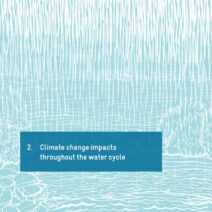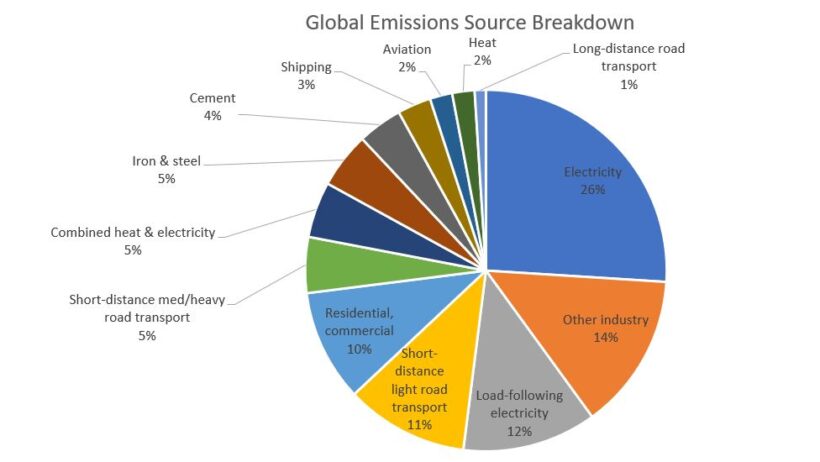Understanding the environmental footprint of the United States is paramount for grappling with the intricate phenomena of global warming. This delineation encompasses not only individual behavior but also institutional practices and their collective ramifications on the planet’s climatic equilibrium. The U.S. emits a considerable proportion of global greenhouse gases, and dissecting this contribution is essential for formulating effective mitigation strategies.
At the core of this subject lies the concept of the carbon footprint. This term encapsulates the total greenhouse gas emissions—particularly carbon dioxide (CO2)—attributed to human activity, including industrial practices, transportation, energy consumption, and agriculture. Often quantified in metric tons, this footprint provides a numerical representation of environmental impact akin to a financial ledger. The U.S. ranks among the highest per capita emitters of CO2, a status that incites scrutiny and necessitates introspection regarding its lifestyle choices and industrial operations.
Transportation emerges as a salient contributor to the American carbon footprint, accounting for approximately 29% of annual greenhouse gas emissions. The sprawling nature of cities and the reliance on automobiles significantly amplify this figure. Personal vehicles, freight trucks, and air travel all contribute extensively to atmospheric pollution. Moreover, the fossil fuel consumption inherent in these modes of transport exacerbates the issue, underscoring the critical need for a societal pivot towards more sustainable practices, such as public transportation, cycling, and electric vehicles.
Energy consumption is another linchpin in the discussion of the U.S. contribution to climate change. The electricity sector predominantly relies on fossil fuels, especially coal and natural gas, generating around 25% of national emissions. The combustion of these fuels not only releases CO2 but also other hazardous pollutants. Transitioning to renewable energy sources such as wind, solar, and hydropower is imperative for curbing this trajectory. The advancements in technology make clean energy more accessible, yet the shift necessitates robust investment and public policy support.
Agricultural practices also play a pivotal role in shaping the U.S. carbon footprint. The sector is responsible for about 10% of the total greenhouse gas emissions, primarily through methane production from livestock and nitrous oxide emissions from fertilized soils. The mechanization, overuse of fertilizers, and intensive farming practices further amplify the emissions. As dietary patterns evolve towards more plant-based alternatives, this transition could significantly reduce agricultural emissions while fostering biodiversity and soil health.
Industrial processes contribute approximately 22% to the U.S. greenhouse gas emissions. This sector encompasses a broad array of activities, from manufacturing goods to processing raw materials. The intricate supply chains that characterize modern industries heighten the complexity of emissions reporting and reduction. Innovations in manufacturing, such as carbon capture and storage technologies, are essential in minimizing the carbon outputs associated with industrial activities.
Solid waste management, an often-overlooked domain, also contributes to the U.S. carbon footprint. Landfills emit methane—a potent greenhouse gas—through the decomposition of organic waste. The implementation of robust recycling programs and composting initiatives can mitigate these emissions and promote resource efficiency. Communities must prioritize waste reduction strategies as part of a comprehensive approach to environmental stewardship.
Understanding the footprint of the United States in the context of global warming entails not only recognizing direct emissions but also examining consumption patterns. The U.S. has an immense appetite for resources, leading to significant emissions associated with imported goods. This “embodied carbon” reflects the greenhouse gases released during the manufacturing and transportation of products made abroad. Thus, advocating for sustainability encompasses both domestic production practices and responsible consumption of imported items.
Interlinking these various threads reveals a tapestry of intricate relationships—one where individual choices resonate through a larger societal framework. Grassroots movements and environmental advocacy organizations play a pivotal role in disseminating knowledge, urging consumers to make conscientious decisions regarding food, transit, and energy usage. Public engagement fosters a culture of accountability, compelling policymakers to enact stringent regulations and ambitious targets aimed at mitigating climate change.
Educational initiatives serve as the backbone of fostering an environmentally aware populace. By equipping citizens with the necessary knowledge of sustainable practices, communities can collectively work towards reducing their carbon footprint. Schools, universities, and community organizations can champion programs that emphasize renewable energy, resource conservation, and sustainability, thereby nurturing a generation poised to confront the climate crisis.
In conclusion, the U.S. contribution to global warming is rooted in multifaceted domains, including transportation, energy consumption, agriculture, industry, and waste management. Each sector offers a prism through which to understand the broader implications of American lifestyles and industrial practices on the environment. A concerted effort towards sustainable practices, informed decision-making, and educational outreach is essential for abating the calamitous trajectory of climate change. The responsibility extends beyond individuals, cascading into the realms of corporations, governments, and societies at large. Navigating towards a sustainable future necessitates unyielding commitment and innovative solutions, for the stakes—in terms of ecological balance—are incomprehensibly monumental.






